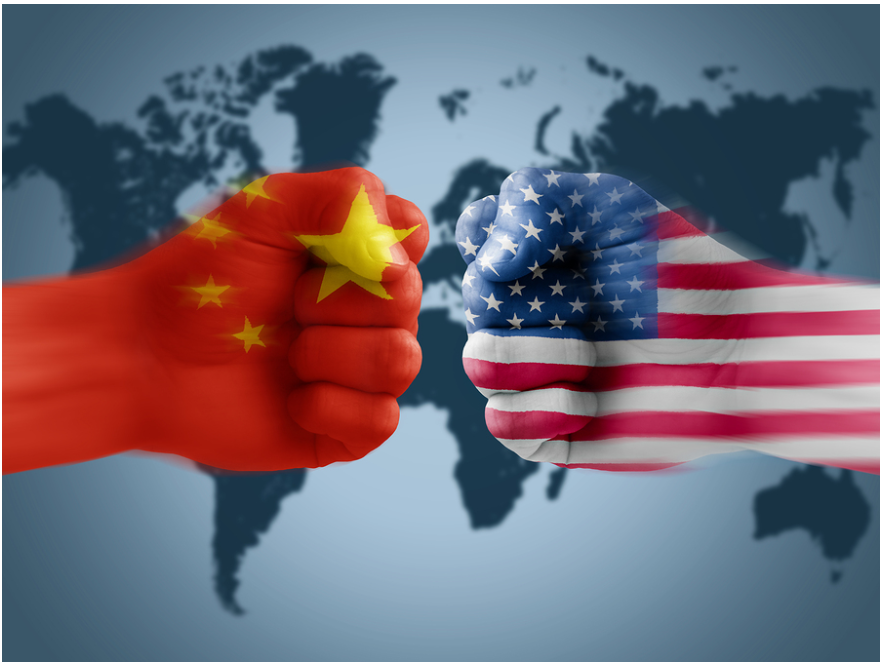I de seneste år har mange i USA talt om at bryde den tætte forbindelse til Kina, men det kan stort set ikke lade sig gøre, da begge lande er økonomisk tæt forbundne, skriver Merrill. Samhandelen vokser kraftigt trods handelskrig og kritik fra amerikansk side. Kina fastholder sine enorme investeringer i USA’s obligationer, og amerikanske virksomheder tjener mere på Kina end på Tyskland og Frankrig tilsammen. Desuden er amerikanske pengeforvaltere stærkt på vej ind i det kinesiske opsparingsmarked, der ventes at blive på gigantiske 70.000 milliarder dollar i 2030 – enormt selv i amerikansk standard. Derfor bliver det svært at kappe forbindelsen mellem de to supermagter, skriver Merrill.
U.S.-China Relations:
Breaking Up is Hard to Do
A great power rivalry is underway between the world’s two
largest economies, notably in tech, creating tail risks for U.S. investors. And yes, China’s
recent regulatory crackdown has spawned near-term commercial uncertainties that could
impinge and inhibit bilateral flows of capital, trade and investment. Add in recriminations
over the origins of coronavirus, tensions over the treatment of Hong Kong, and human
rights violations in Xinjing, and there’s plenty of fodder for the divorce lawyers.
But that said, various data points speak to a bilateral relationship that is far from being a
lost cause and of economic bonds that are mutually beneficial to both parties. Sure, risks
of a U.S.-China separation (aka, decoupling) are real, but a split isn’t inevitable—which may
be a bullish prospect for many U.S. and Chinese firms.
That breaking up is hard to do is evident by the following:
Trade in goods: After rising nearly 16% last year, U.S. goods exports to China soared
41.5% in the first seven months of this year ($82.8 billion) from the period a year ago and
are expected to hit a record high of $141 billion in 2021 (Exhibit 2). Outside of America’s
North American Free Trade Agreement (NAFTA) partners, Mexico and Canada, China is the
largest market in the world for U.S. exports. Top exports to China: think agricultural goods
to advanced technology products and everything in between.
Trade in services: U.S. service exports to China remain depressed due in part to the
collapse in bilateral travel receipts, but U.S. service exports to China in 2020 ($40 billion)
were still some 36% larger than U.S. service exports to Germany, Europe’s largest
economy. What’s more, when it comes to trade in services, the U.S. perennially enjoys a
trade surplus with China, with the surplus totaling $25 billion in 2020.
Chinese holdings of U.S. Treasury securities—These are still robust notwithstanding
numerous bilateral friction points. As depicted in Exhibit 3, Chinese holdings of U.S.
Treasuries have remained relatively constant over the past decade, totaling $1.1 trillion as of
the end of June 2021. Meanwhile, Chinese holdings of U.S. corporate bonds and U.S. equities
rose 13.1% and 16.1%, respectively, in the first six months of this year versus the same
period a year ago according to the latest Treasury International Capital (TIC) data.
Capital
flows have traditionally run one way—from China to the U.S. However, when it comes to
investing in liquid securities, it’s not a one-way street any more. According to estimates from
the Rhodium Group, U.S. investors held $100 billion in Chinese debt at the end of 2020 and
$1.1 trillion in Chinese equities. The latter figure has dropped with the crackdown in big tech
in China, although the key point is that even with the swoon in Chinese equity prices this
year, U.S. portfolio flows to China remain at or near record highs.
China as a source of U.S. corporate profits: Little recognized by investors, China has
long been a profits engine for many U.S. multinationals. Indeed, it’s now very common for
U.S. firms to book larger annual profits in China each year than in Germany and France
combined. While global U.S. foreign affiliate income (a proxy for U.S. global earnings)
declined nearly 16% in 2020 due to aftershocks of the pandemic, U.S. affiliate income in
China dropped by only 2.8%.
U.S. foreign direct investment (FDI) in China—Still strong. Contrary to the chatter of
U.S. firms decamping China for other locales, there is scant evidence of a wholesale
retreat. In fact, according to data from the BEA, U.S. FDI to China jumped 32% last year, to
$9.3 billion, from the prior year. Inflows last year were the strongest since 2014, and the
money keeps coming, with Apple recently announcing that it was actually increasing its
number of Chinese suppliers for its iPhones at the expense of rivals in Japan, Taiwan and
South Korea.
Wall Street banks are also getting into the act, with a number of U.S. financial firms
recently announcing joint ventures or wholly owned foreign entities in China in a bid to tap
the country’s massive savings pool. How big is this pool? According to Goldman Sachs, the
investable assets of Chinese households will be in the neighborhood of $70 trillion by
2030, a staggering sum even by Wall Street standards.
Presently, most of this savings is
parked in savings deposits or real estate, but Beijing, by liberalizing parts of its capital
markets to foreign investors, hopes Wall Street will develop a wealth management
industry more suited for China’s future needs.
Speaking of Wall Street and love affairs, the Financial Times recently noted:
“In an era that is increasingly defined by geopolitical competition and a push towards
economic “decoupling,” American finance has never been closer to Chinese wealth. Seduced by
China’s growing and massive pool of savings, Wall Street’s most storied firms are embedding
themselves more deeply than ever into the country.”
The operative word here is “seduced,” with both the U.S. and China long seduced and
enamored with each other’s massive consumer markets, technological capabilities and
outsized investment opportunities, among other things. In addition, life styles, sports,
entertainment, travel, education—all of these factors, and others, have strengthened the
bonds between the U.S. and China over the past few decades. Hence, why it’s so hard for
this power couple to break up.







